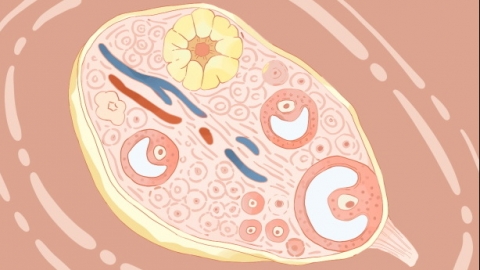What are the reasons why the yolk sac does not appear?
In general, the absence of a yolk sac may be caused by miscalculation of gestational age, delayed embryo implantation, luteal phase deficiency, hypothyroidism, uterine malformation, or other factors. If no yolk sac is detected during examination, it is recommended to repeat the test after an interval to clarify the situation and take timely action. Specific analyses are as follows:

1. Gestational Age Calculation Error
Irregular menstrual cycles can lead to inaccurate estimation of gestational age. When the actual gestational age is less than 5 weeks, the yolk sac has not yet developed and thus cannot be detected by ultrasound. Recalculate the gestational age based on the last menstrual period and date of intercourse, then repeat the ultrasound in 1–2 weeks to monitor yolk sac development.
2. Delayed Embryo Implantation
Factors such as high mental stress and environmental stimuli may affect the movement of the fertilized egg, delaying implantation and consequently postponing yolk sac development. Maintain regular sleep patterns, avoid staying up late and excessive fatigue, eat a balanced diet rich in nutrients, and reduce psychological stress.
3. Luteal Phase Deficiency
Insufficient progesterone secretion by the ovarian corpus luteum fails to support normal embryonic development, leading to impaired yolk sac formation, often accompanied by light vaginal bleeding. Under medical guidance, medications such as progesterone capsules, dydrogesterone tablets, or medroxyprogesterone acetate tablets may be prescribed, with regular monitoring of progesterone levels.
4. Hypothyroidism
Reduced thyroid hormone secretion disrupts endocrine balance and interferes with embryonic development, inhibiting yolk sac formation, and may present with symptoms such as fatigue and cold intolerance. Under medical supervision, treatment may include levothyroxine sodium tablets, thyroid extract tablets, or levothyroxine tablets, with periodic re-evaluation of thyroid function.
5. Uterine Malformation
Abnormal uterine cavity morphology due to conditions like septate uterus or bicornuate uterus creates a suboptimal environment for embryo implantation, hindering yolk sac development. Mild malformations can be corrected via hysteroscopic resection of the uterine septum. Postoperative care includes adequate rest and prevention of infection.
In daily life, maintain a regular routine and avoid staying up late; follow a balanced diet supplemented with folic acid and protein; reduce mental stress and maintain emotional stability; undergo regular check-ups during preconception and early pregnancy to promptly identify and address any issues.










